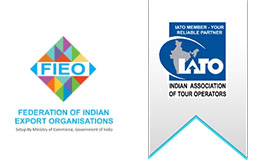TRAVEL INFORMATION INDIA
Holi Fair Festival India
India

The most boisterous of Hindu festivals, Holi waves goodbye to winter and welcomes in spring in a rainbow of colours. In India it’s predominantly celebrated in the north of the country, and is quite rightly known as the Festival of Colours for the raucous events on Holi’s final day, when children and adults take to the streets throwing colourful gulal (powder) over each other. Dyed water is shot from syringes, thrown from buckets and poured into balloons, which are then tossed at people. It’s sanctioned anarchy and, as a visitor, you’ll be a particular target so expect to finish the day looking like gulab jamun (a red, sticky Indian sweet). Authorities urge the use of natural dyes, so they can be easily cleaned off, but you could be a mobile colour chart for days or weeks after. Though it runs for three days, Holi is mostly condensed into this final mad day. The night before, huge bonfires are lit at major crossroads in towns and cities and effigies of the demon Holika are burned to symbolise the triumph of good over evil. Whether you think good or evil comes up trumps the next day might depend just how much gulal ends up being thrown your way. There are many places to witness huge Holi celebrations. In Udaipur, the royal family hosts an elaborate function at the City Palace, while the Uttar Pradesh towns of Mathura, Nandgaon, Vridavan and Barsana are linked with the birth and childhood of Krishna, giving them special Holi significance In Nepal, the festival is also known as Fagu and is a muted mix of India’s Holi and Thailand’s Songkran. Falling late in Nepal’s dry season, at a time when the country is heating up, water is sprayed about as a reminder of the cooling monsoon days to come. As in India, coloured powder and water (particularly red) is also dispensed, and again foreigners will get special attention. Holi’s origins are little known but references to it have dated back to around the 3rd century BC.



